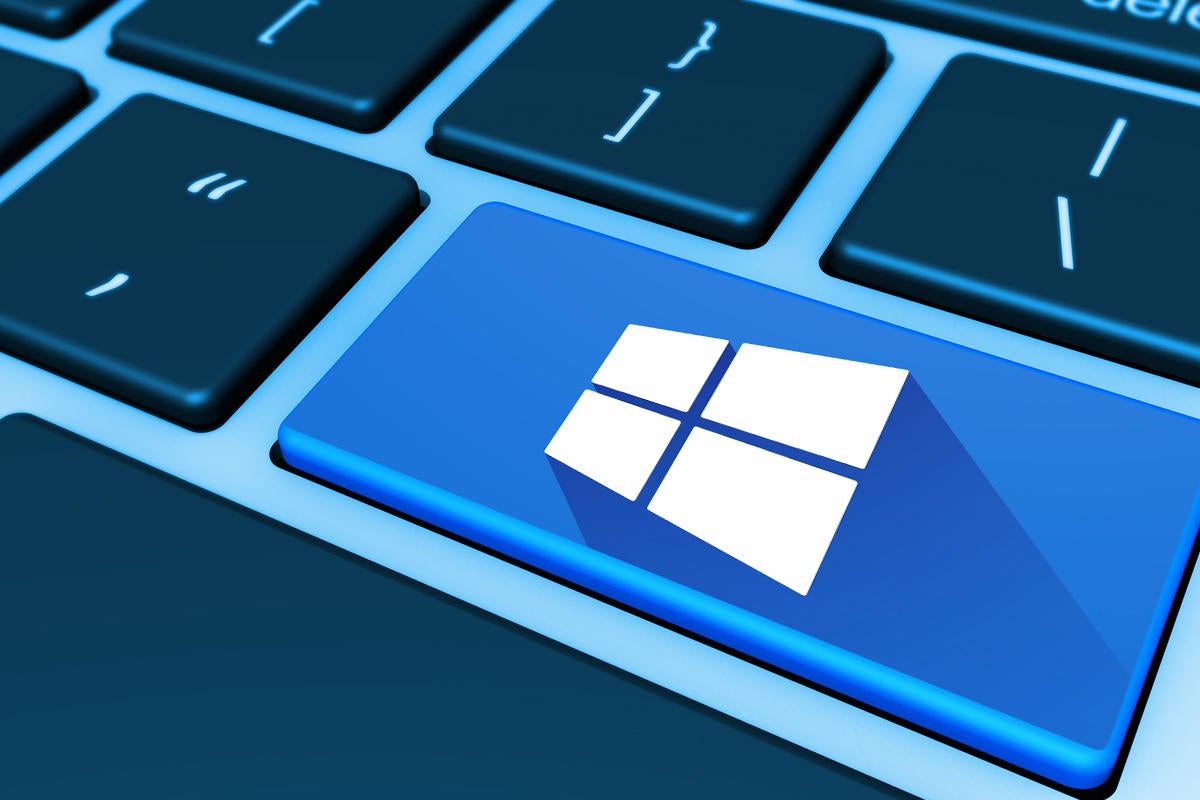Windows 11 is finally upon us. Officially announced on June 24th 2021, Windows 11 is a free upgrade for anyone who’s currently running Windows 10, and it’ll be available as the standard operating system on new PCs and laptops going forward. Some things have changed and some have stayed the same, but one thing’s for sure: there’s lots about Windows 11 that you might not know. Here are 17 of our favourite tips, tricks, and facts about the wonderful world of Microsoft’s new operating system.
1. You can move the Start bar back
One of the most divisive features in Windows 11 is the position of its new Start bar. It’s now occupying the middle of the taskbar, but if you don’t like this, you can actually move it back. All you need to do is right-click anywhere on the taskbar, then click “Taskbar Settings”. From there, you’ll see an option marked “Taskbar Behaviours”, and you can choose to move the Start bar using that option.
2. Windows 11 supports Android apps…kind of
Windows 11 has full Amazon App Store integration, which means that any Android app available via the Amazon App Store is also available to download on Windows 11. Unfortunately, this is a much more limited set of apps than you’d get if you were able to officially download the Google Play Store, but it’s something. There may even be a way to get the Google Play Store working on Windows 11, but you didn’t hear it from us.
3. It’s free if you’re on Windows 10
Alright, so if you’re running Windows 11, you probably already know this, but it never hurts to be reminded if you’re yet to adopt the system. Windows 11 is completely free if you’re running Windows already. You won’t need to buy it even if you’re all the way back on Windows 8; just upgrade when you’re prompted (or run Microsoft’s official upgrade tool) and you’re good to go.
4. You don’t have to upgrade…
If you really don’t like the look of Windows 11, or you’d rather hold off until you know the operating system is stable (which is understandable given past form), then upgrading is not mandatory. All you need to do is decline the update if and when it appears. You can also simply not visit the Windows update page if you’re happy with the way your OS is working right now.
5. …but eventually, you will
In 2025, Microsoft is ending support for Windows 10. While this technically doesn’t mean you can’t use the operating system anymore, it does mean you won’t be able to expect any support or help if you do continue to use Windows 10. By 2025, it’s clear Microsoft wants everyone to upgrade to its new operating system, so make sure that’s on your calendar.
6. Chrome can mimic Windows 11
If you’re a Google Chrome user (like 3.2 billion people around the world are), then you’ll like this one. You can actually change Chrome’s aesthetic to better resemble Windows 11, giving your windows (not Windows) a more unified look. All you need to do is update Chrome to the latest version, then type “chrome://flags” into a new tab address bar. Look for “Windows 11” using Search, then toggle that option to Enabled.
7. You can get lots of info using Widgets
Windows 11 comes with a new Widgets feature installed by default. On your taskbar, you’ll see a small window with white and blue boxes inside it next to the Chat interface. Click that button and you’ll see a Widgets window appear, complete with lots of information like weather, news stories, and stock prices. You can then add or remove widgets according to your own preferences. Neat, huh?
8. Teams is built in
Speaking of that Chat interface, Microsoft has now included its Teams software as standard with Windows 11, so you can access Teams without needing to install any extra apps. All you need to do is click the small purple speech bubble with the camera icon inside it. This will bring up an in-OS Teams interface that you can sign into and use to chat to your colleagues.
9. Windows 11 has better virtual desktops
The virtual desktop feature was available in Windows 10, but Microsoft never made the most of it. This feature has been improved in Windows 11, allowing you to create and manage a wide range of desktops for different purposes. You can customise each desktop with different apps, backgrounds, and shortcuts, meaning you can seamlessly switch from gaming to productivity mode and back.
10. Snap layouts make multitasking a breeze
Open up any window in Windows 11. We’ll wait. Now, see that small square button between the minimise and close options in the top right? Previously, all that did was make the window portable so you could move it around the desktop. Now, though, you can make the window part of a Snap Layout, which lets you easily position it in any number of preset layouts.
11. You can tell the Xbox app not to bother you
Okay, so the Xbox app is a pretty excellent addition for anyone who’s intending to use Windows 11 for gaming. However, not everyone is going to be a gamer, and sometimes, you’ll be using a Windows 11 laptop purely for work purposes. If that’s you, then you can tell the Xbox app – which now pops up on Windows 11 by default – to stop doing this. Right-click it in the taskbar, pick Settings, then find the “automatically launch” box under General.
12. Windows 11 is more power-efficient than Windows 10
This won’t matter if you’re running a desktop PC (although power usage considerations should still be on your mind from an environmental perspective), but it’s a godsend for laptop users thanks to new power saving improvements. You can also enable power saving mode if Windows 11 isn’t quite doing enough to maintain your device’s battery life. All you need to do is click the battery icon in your taskbar, then click “Battery Saver”. Voila – you should now be using less power!
13. The menus are all minimalist now
File Explorer menus have changed significantly in Windows 11. There’s much more of a focus on minimalist icons and less of a text overload, although this does come at a cost of legibility, at least initially. You might want to take a little time to get used to the way File Explorer works now. For the most part, commonly-used options are available as quick icons along the top when you right-click a file, with less common options represented below in their usual text form.
14. The volume mixer has changed
If you’re someone who regularly changes sound sources, the new volume mixer can be a bit of a headache. Now, when you right-click the volume slider in the taskbar, you’ll be shown a menu that allows you to visit Windows 11’s new mixer controls. They’re more feature-rich than before, but there’s no quick way to adjust sounds in the mixer on the fly, so this is a mixed bag as far as improvements go. Still, you’ll get used to it in time, and it is nice to have a larger window to see everything in.
15. You can’t just set default apps anymore
Perhaps in a bid to make it more difficult to switch your web browser (and other Microsoft-developed apps), Windows 11 no longer easily allows you to set a default browser. Instead, you’ll have to go into the Default Apps dialogue and change the browser for individual file extensions. This is a nightmare for anyone who doesn’t know what they’re doing; Microsoft clearly wants you to use Edge, so it doesn’t want to make it easy for you to switch to Chrome. However, as of the latest test build, this no longer appears to be the case.
16. The taskbar is taller
Here’s a small but neat little change in Windows 11. If you compare the Windows 11 taskbar to the one in Windows 10, you’ll notice the 11 variant is just slightly taller. This makes it a little easier to get to the apps you need and access icons you use on a regular basis. It’s a small change, but it’s neat. However, it comes at a cost; you can’t move the taskbar to the left, right, or top of your screen anymore. Nadella giveth and he taketh away.
17. The Windows 11 clock app has a neat productivity feature
While the Windows 11 Alarms & Clock app doesn’t come with every copy of Windows 11 by default, installing it nets you a cool productivity feature. You can enable the Focus Sessions mode in order to help you prevent distractions and get work done. It appears on the left-hand side of the app and shows you a productivity menu including a to-do list, Spotify playlists, and a countdown to your next break. It’s a nifty little feature if you’ve ever struggled to focus!
– Continue Reading This Article Series
17 Things You Didn’t Know About Windows:
– Windows 3.0x
– Windows 95
– Windows 98
– Windows Me
– Windows Vista
– Windows XP
– Windows 7
– Windows 8
– Windows 10
– Windows 11

